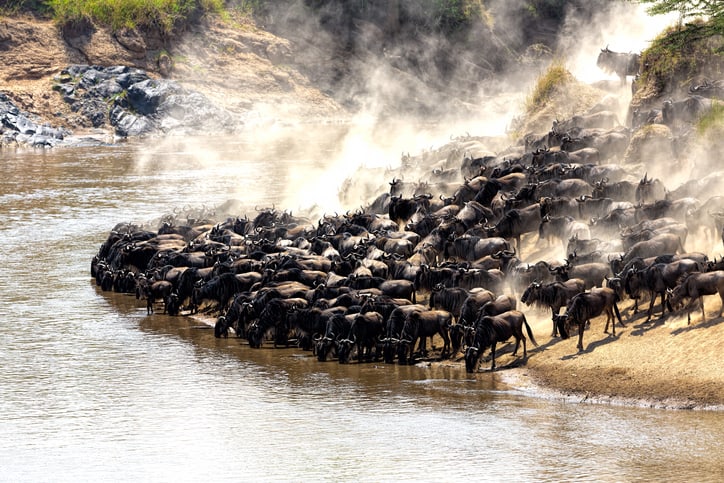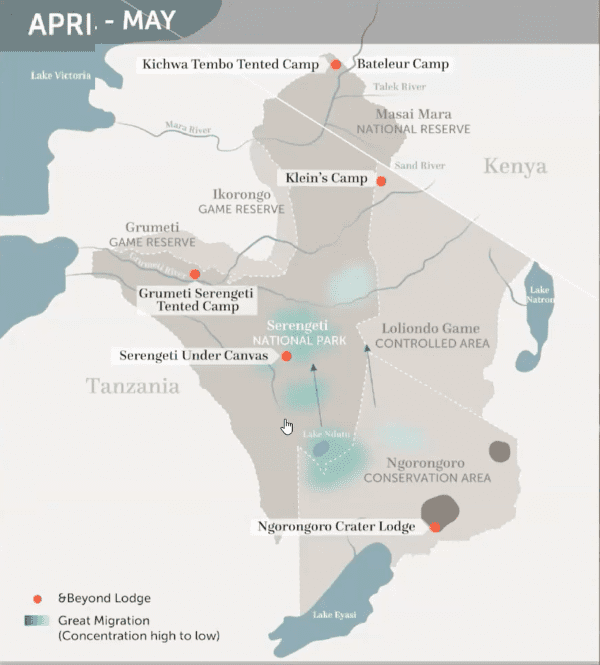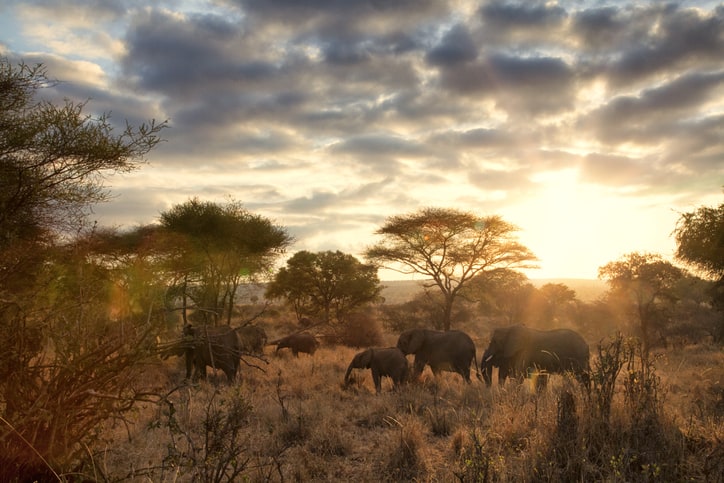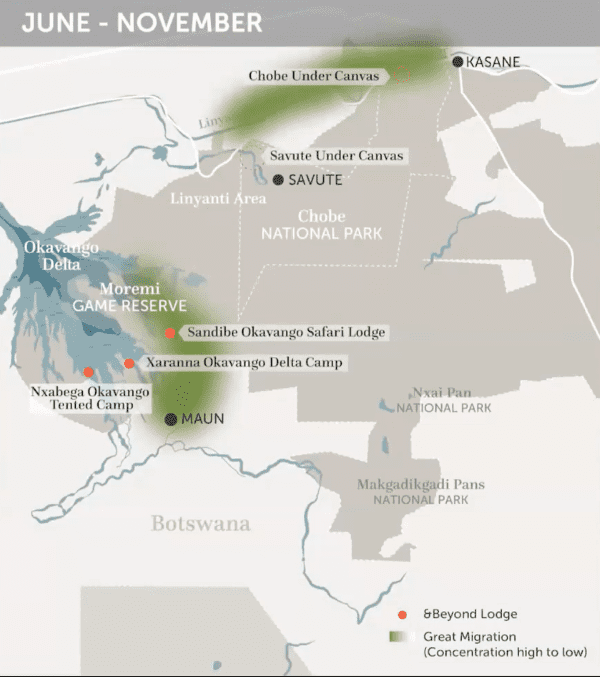Animal migration happens for various reasons, for some, it is about depleted food sources and the climate, while for others, it is about heading back to where it started and giving birth to the next generation. Some are seasonal, while others are a year-long affair (did you know that the wildebeest in Tanzania and Kenya are constantly on the move all year round?). We share this and 7 other lesser-known facts:
Zebra herds are called Dazzles, and they dazzle for many miles
Commonly found around the rivers in dry months, zebra herds are said to move up to nearly 1,000 km each year, the longest migration of all land animals in Africa They make their way almost all the way across Botswana, back-and-forth during the interchanging seasons – southbound towards the desert in the wet season from November to March, and then back North through the same tracks during the dry season from April to October. A truly dazzling spectacle when viewing a large, um, dazzle, running through the plains.

Beware of snaps: Wildebeests brave the waters of Mara River
It is said that Wildebeests are able to stand and even walk almost immediately after birth, extremely vital due to their vulnerability to the predators around them. Up to 250,000 wildebeests die each year during the migration, either because of thirst, hunger, or simply being hunted down by prides of lionesses or other predators. One of their most perilous crossings is made in the legendary river crossing at Mara River. Situated between the borders of Tanzania and Kenya, thousands and thousands of wildebeests make their way across the river during July and through August, and not all of them make it across safely. Get your best views from Tanzania, where most wildebeests graze before crossing the river.

Pink skies and Flamboyance
One of the lesser well-known migrations, but certainly ranks high on our list of nature’s greatest shows. These great big birds fly in a V-shaped formation to their breeding grounds from April to June from Kenya. Although they are lagoon birds, their giant wings allow them to fly up to 4-5km up in the sky to avoid predators like eagles. Millions of pink feathers make even the skies blush bright pink, which also echoes what people call a large pack of flamingos – Flamboyance!

Summer home in Africa: Southern Right Whales go north
Like the Hamptons to a New Yorker, Southern Right Whales have holiday homes too. From June to November, these large gentle mammals make their way north from the colder waters of Antarctica to the warmer waters along the southern coast of South Africa between Hermanus to Plettenberg Bay, where they mate and give birth to young calves. This whale watcher’s haven has the added advantage of being able to view these magnificent giants right from shore, with an excellent variety of cosy boutique hotels and beachfront villas to choose from.
Boom, baby, boom: Wildebeests give birth to over 500,000 calves each year
Having already amazed us with their ability to walk within days and keep up with the gigantic herd, wildebeests also impress with their fertility, with a record of 8,000 calves born in one day. Sadly, this is essential to the survival of the herd with several predators ranging from snappy crocodiles, hungry hyenas, and prying prides picking on these easy prey – definitely not for the faint-hearted! For the intrepid traveller, this is a wonderful season (January – March) for a safari to experience the circle of life with thousands of calves and plenty of action from the predators on the prowl.

Amazing Graze: up to 4,000 tonnes of grass is consumed each day
With all this grass-gorging, it’s no wonder animals have to migrate! However, did you know that zebras and wildebeests graze hand-in-hand (or hoof-to-hoof) with the limited food resources in the plains? Zebras, who are less choosy, eat the taller grass, while the pickier wildebeests only like the short, more palatable parts of the grass. There certainly won’t be any leftovers when they are through!

A true bachelor’s party: male predators buff up and follow the migratory herds
For a bachelor to win over the pack and become the alpha male, it’s important to not only be strong, but also smart. Some bachelor lions form groups to follow the herds and hunt during these migrations, picking out easy targets like calves. Only the strongest and boldest are then able to head back to a pride to challenge the leader.Â
There are still many mysteries surrounding migrations – how do these animals identify their destinations? How do they know where they are headed to without a leader? Regardless, it is one of nature’s most spectacular wonders with different phases and seasons. Whether you would like to witness hundreds or thousands of new-born calves and the heart-stopping hunts by predators, or thunderous hooves braving deep water on a perilous river crossing, we at Intriq Journey would be more than happy to share our decades of experience and plan for your journey to experience this spectacle in Africa.
GET STARTED WITH YOUR PERSONALISED UNIQUE JOURNEY
WhatsApp us 8820 9080, call us at +65 6219 1359 or email us at enquiry@intriqjourney.com to enquire more.
Contact Us